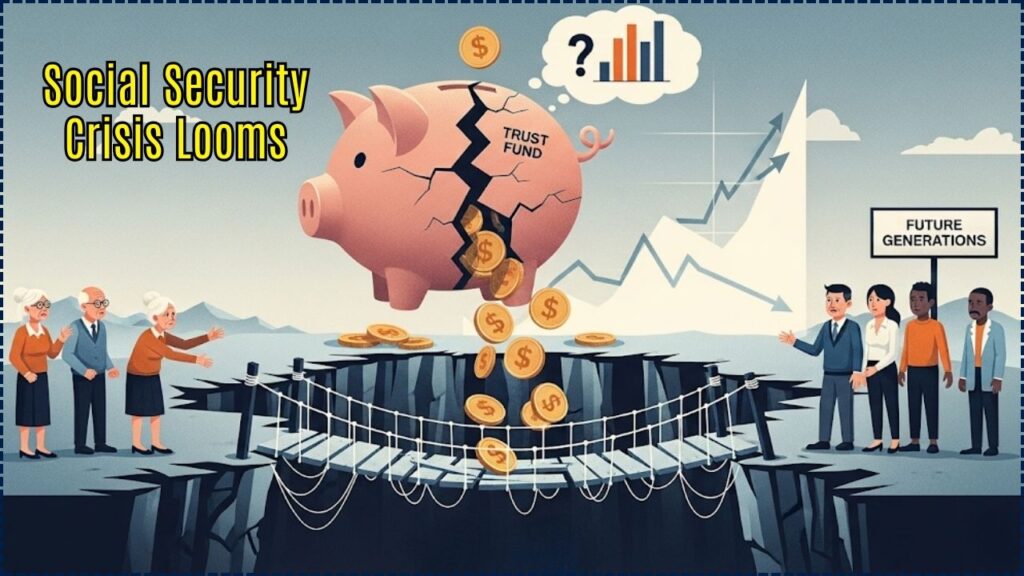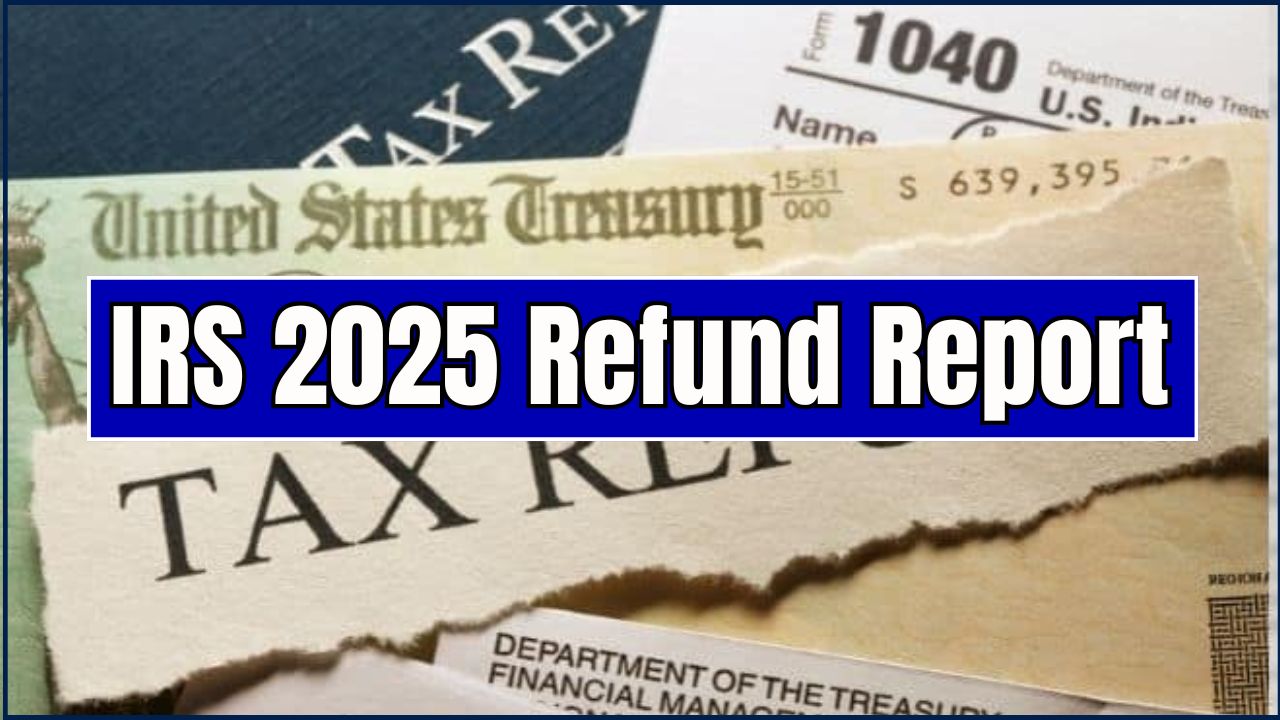The phrase “Social Security crisis looms” isn’t just clickbait. It’s a wake-up call. By 2032–2033, the Social Security trust fund—the backbone of retirement for millions of Americans—could run dry. When that happens, benefits could get chopped by nearly one-quarter.

This isn’t just D.C. politics or numbers on a spreadsheet. This is about whether your parents can afford their prescriptions, whether Grandma keeps the lights on, and whether you’ll get the retirement you’ve been working toward since your first summer job.
Social Security Crisis Looms
| Topic | Details |
|---|---|
| Trust Fund Depletion | Projected by 2032–2033, one year earlier than expected |
| Benefit Cuts | About 23–24% across the board if Congress doesn’t act |
| Average Loss | Roughly $461/month or $5,500/year for the typical retiree |
| Workers-to-Retirees Ratio | Dropped from 5:1 in 1960s to under 3:1 today |
| Generational Impact | Boomers = safe-ish, Gen X = squeezed, Millennials & Gen Z = biggest risk |
| Long-Term Shortfall | Over $25 trillion (75-year outlook, Brookings Institute) |
| Solutions | Raise payroll tax, lift wage cap, raise retirement age, or invest differently |
| Official Source | Social Security Administration (SSA) |
The Social Security crisis is no longer a future problem—it’s here. By 2032–2033, benefits could face 23–24% cuts unless Congress acts. But you’re not powerless. With smart saving, diversified income, and staying informed, you can protect your retirement.
Social Security has been America’s safety net for 90 years. It’s time to fight for it—and to prepare yourself in case Washington doesn’t step up.
A Quick History Lesson: How We Got Here
Back in 1935, during the Great Depression, President Franklin D. Roosevelt signed the Social Security Act. It was a safety net for seniors who had worked their whole lives but lost everything when the economy tanked.
It worked like a charm—workers paid in through payroll taxes, retirees pulled money out. Fast-forward to the 1960s, and five workers supported every retiree. Life expectancy was shorter, so most people didn’t even collect for long.
But times have changed:
- Today, we have fewer than 3 workers per retiree.
- Folks are living 20+ years in retirement.
- Benefits expanded over the years, but taxes didn’t keep up.
Now the piggy bank is looking mighty empty.
Why the Trust Fund Is Running Dry
- Demographics – More baby boomers retiring + fewer younger workers paying in.
- Legislation – Acts like the Social Security Fairness Act restored benefits to millions, adding strain.
- Economy & Taxes – Payroll tax cap means billionaires stop paying into the system early each year.
This mix of math and politics means that by 2032, Social Security will only be able to pay about 77% of promised benefits.
What Happens If Nothing Changes?
- Across-the-board cuts of about 23–24%.
- Example: $2,000/month benefit becomes $1,540.
- For a retired couple, that’s $18,400 less per year.
Picture this: Your 75-year-old dad has to choose between groceries and prescriptions. That’s not some sci-fi future—it’s less than a decade away.
Who Gets Hit the Hardest? (Generational Breakdown)
- Baby Boomers (born 1946–1964): Many are already retired or close. Cuts will sting, but they’ll still get most of their promised checks.
- Gen X (1965–1980): You’re the “sandwich generation,” supporting kids and parents. You’ll feel the pinch hardest when you retire in the 2030s–2040s.
- Millennials (1981–1996): You’re paying in now but may see reduced benefits unless reforms happen.
- Gen Z (1997–2012): The biggest wild card. Without reform, you may pay more taxes for fewer benefits. Ain’t that a raw deal?
1983 vs. Today: A Tale of Two Crises
The 1983 Social Security crisis was different from today’s challenge. Back then, there was a more immediate, severe cash flow problem. Today, the crisis is a long-term one.
| * | The 1983 Crisis | The Current Crisis |
| Problem | A short-term cash shortfall, requiring an immediate fix to avoid a disruption in payments. | A long-term structural imbalance; more people are retiring than are working and contributing to the system. |
| Solution | Congress enacted a bipartisan plan that included a tax increase, a six-month delay in the COLA, and gradually increasing the retirement age. | No comprehensive plan has been passed. Potential solutions include raising the full retirement age, increasing the tax cap, or reducing benefits. |
| Political Climate | Though difficult, a bipartisan “Gang of Nine” worked together to find a solution. | The issue is highly polarized, making a legislative compromise difficult. |
The Real Numbers: No Hiding from the Math
- Long-term shortfall: $25 trillion.
- Needed payroll tax increase: from 12.4% to 16.1%.
- Trust fund depletion: late 2032 (earlier than expected).
Possible Fixes (And the Politics Around Them)
Raise Payroll Taxes
Good for solvency, bad for take-home pay.
Lift the Cap on Taxable Wages
Currently capped at $168,600 (2025). Raise or scrap it, and millionaires would keep paying all year. Popular with progressives, opposed by conservatives.
Adjust Retirement Age
Pushing full retirement age to 68 or 69 saves money, but tough on folks in physical jobs like construction or nursing.
Privatization / Investments
Some propose letting Social Security invest in stocks. Higher return potential—but risky. Do we really want Grandma’s retirement riding on Wall Street’s roller coaster?
Practical Steps You Can Take Now
Here’s your personal action plan:
Step 1: Know Your Numbers
- Check your benefits on SSA.gov.
Step 2: Save More
- If you’re 35 and save $100/month in a 401(k) at 6% return, you’ll have $200,000+ by retirement.
Step 3: Diversify Income
- Don’t rely just on Social Security. Build IRAs, Roth IRAs, real estate, side hustles.
Step 4: Plan for Healthcare
- Medicare doesn’t cover everything. Factor in out-of-pocket costs.
Case Studies: Real-Life Scenarios
- Mary, 68, Retired Teacher: Collects $2,000/month. With a 24% cut, she loses $480/month. That’s her grocery bill.
- Tom, 45, Truck Driver: Hopes for $2,500/month at 67. If cuts hit, that’s $575 gone monthly. He’s ramping up his IRA contributions.
- Jess, 28, Millennial Tech Worker: Paying into a system that may not pay her back in full. She’s already investing in index funds to hedge her bets.
3 Myths About Social Security You Need to Know
Don’t fall for these common misconceptions!
- Myth #1: The Trust Fund is a complete fraud. While the funds are held in special government bonds, those bonds are backed by the “full faith and credit” of the U.S. government. They are legally binding obligations that must be repaid.
- Myth #2: Social Security will be gone by the time I retire. While it may not pay 100% of promised benefits after the Trust Fund is depleted, it’s not going away. As long as people are working and paying FICA taxes, benefits will continue to be paid from that revenue.
- Myth #3: The government just needs to “stop wasting the money.” Social Security is a self-funded program. Its payroll taxes are kept separate from the government’s general fund and can only be used for Social Security benefits and administration.
Service Struggles Already Here
It’s not just about future cuts. The Social Security Administration (SSA) is stretched thin now. Workers in Kansas City report handling 1,500 beneficiaries each. That means long wait times, missed calls, and delayed claims.
FAQs
Will Social Security disappear?
No. Even if the trust fund is empty, payroll taxes cover 77% of benefits.
Can Congress fix this?
Yes, but they’ve been kicking the can down the road. Reforms are on the table, but politics always gets in the way.
What’s the best age to claim benefits?
Depends. Early at 62 means smaller checks, later at 70 means bigger ones. Use the SSA calculator to run your numbers.
I’m young. Should I care?
Yes! The earlier you save, the less you’ll feel the cuts. Compound interest is your friend.





